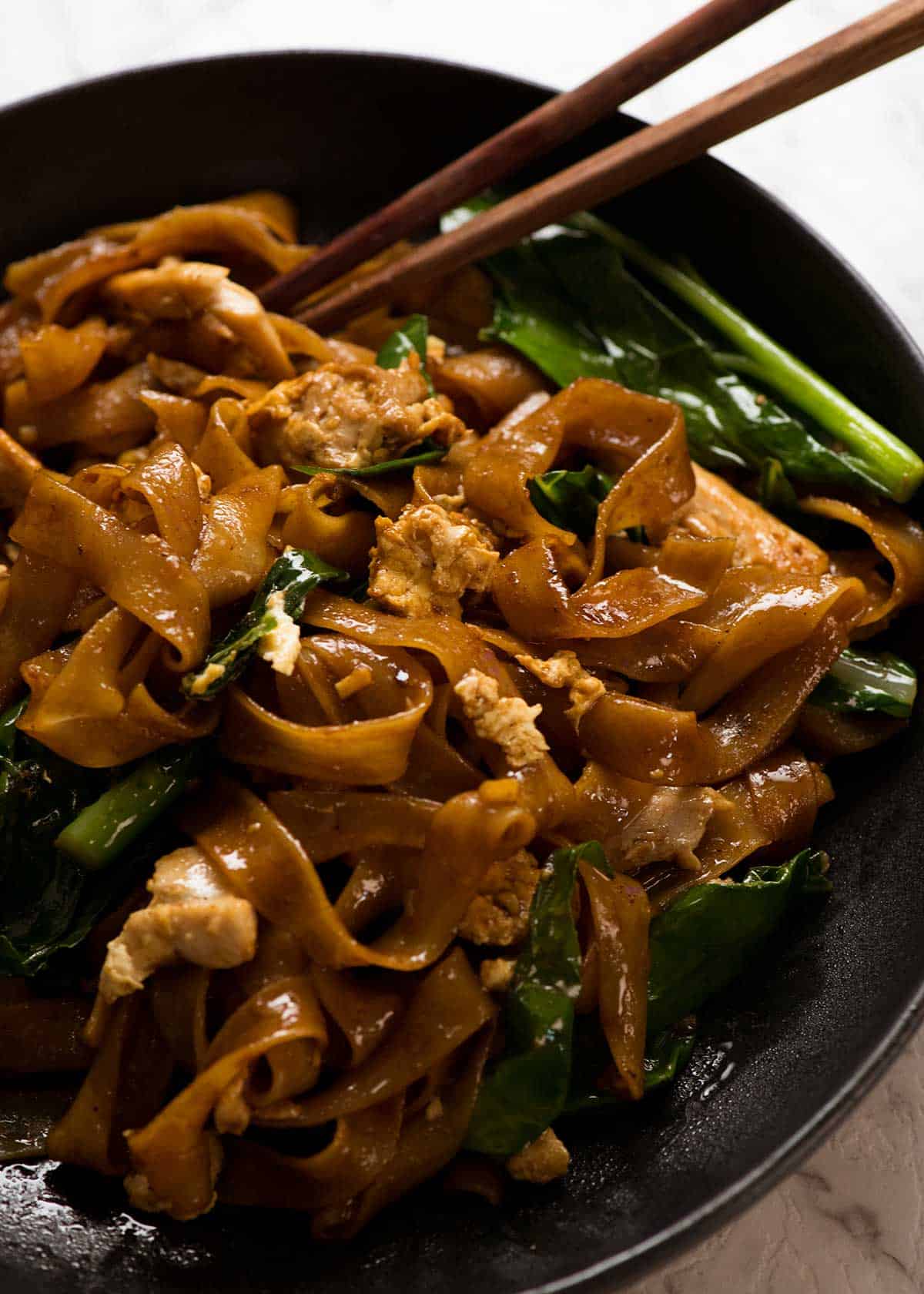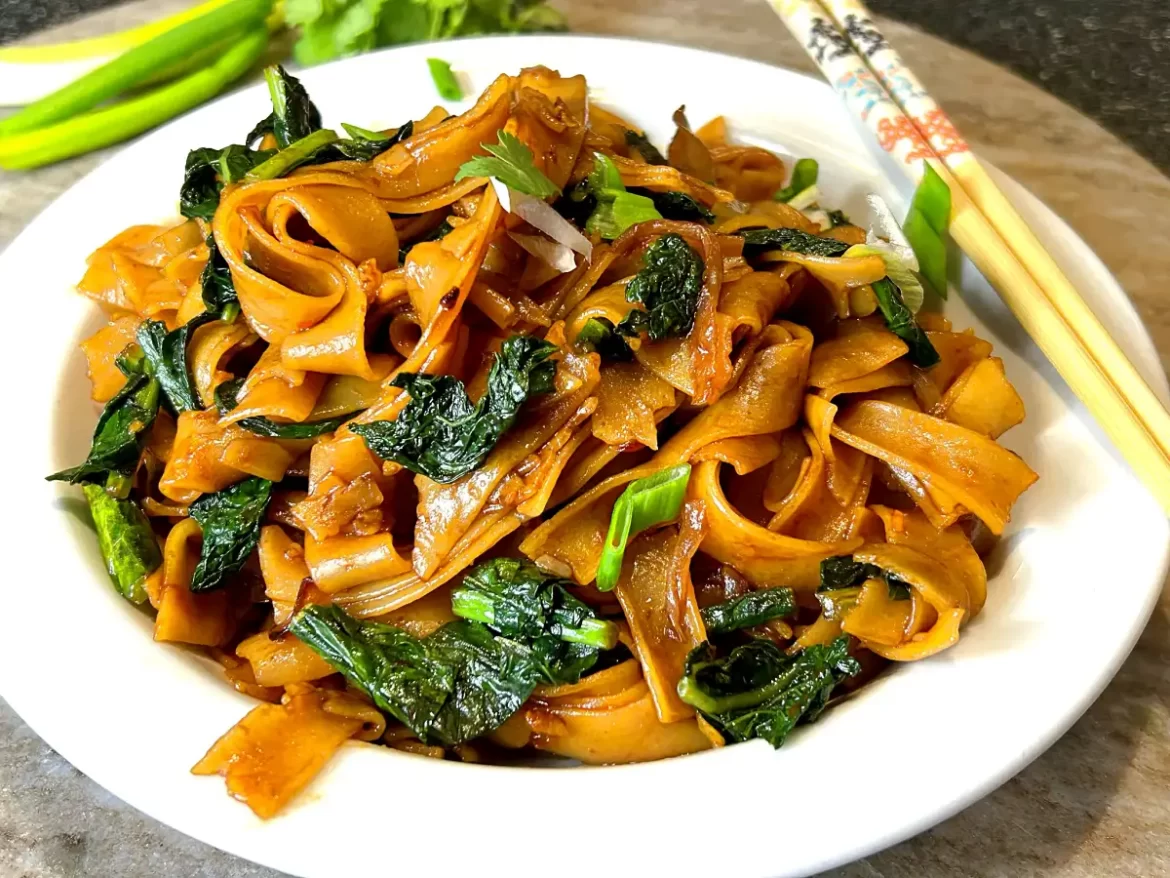183
You’re about to master Pad See Ew, a Thai staple that combines stir-fried flat noodles with soy sauce and Chinese vegetables. This dish is all about wok hei, achieved by cooking over high heat with smoky flavor. To get it right, cook in small batches, and listen to the sizzling sounds and aromas as you add ingredients. Marinate your protein with Thai black soy sauce, oil, and cornstarch, then heat up your wok and sear the beef. Stir-fry noodles, coat with sauce, and combine everything. Now, get ready to elevate your flavors and discover the perfect balance of savory and umami notes.

What Is Pad See Ew?
What Is Pad See Ew? Pad See Ew is a popular Thai stir-fry dish that combines wide rice noodles with your choice of protein, crunchy Chinese broccoli, and a sweet and savory sauce. A Versatile Dish This dish is very adaptable, which means you can change it to suit your tastes and dietary needs. Here’s how: Use different noodle variations, such as homemade rice noodles or gluten-free alternatives. Try regional adaptations that incorporate local spices or ingredients for a unique twist. Make dietary modifications, such as swapping out beef for tofu or using vegan-friendly sauces. Experiment and Enjoy Whether you’re a foodie, a health enthusiast, or just a curious cook, Pad See Ew’s adaptability makes it an exciting culinary adventure.How to Get Wok Hei
Get Wok Hei for Perfect Pad See Ew To get the smoky flavor of wok hei in your Pad See Ew, you need to cook over high heat. This is crucial for achieving the right flavor. High-Heat Cooking is Key- Cook over high heat to get wok hei.
- Add ingredients in small batches to keep the wok hot.
- This technique helps develop complex flavors and textures in Pad See Ew.
- Listen to the sizzling sounds from your wok.
- Smell the aromas coming from your wok.
- These cues will help you adjust the heat and cooking time to get the perfect wok hei.
- Cook quickly to get the right flavors.
- Don’t overcrowd the wok.
- Mastering this wok technique will infuse your Pad See Ew with deep, caramelized flavors, making it a staple of Chinese cuisine.

A NOTE ON THAI SO SAUCES
Understanding Thai Soy Sauces for Authentic Pad See Ew Flavor When making Pad See Ew, you need to know about Thai soy sauces. They help balance the savory and umami flavors in the dish. In Thai cuisine, soy sauces aren’t all the same; different types are used for specific flavor profiles. Types of Thai Soy Sauces:- Thai Thin Soy Sauce: Light and delicate, adds a subtle savory flavor without overpowering the dish.
- Thai Black Soy Sauce: Thicker and sweeter, adds depth and umami flavor.
- Other Thai Soy Sauces: Like dark soy sauce or sweet soy sauce, can add more flavor layers, but aren’t essential for Pad See Ew.
Recipe Instructions
Make Delicious Pad See Ew with These Easy Steps! Before you start cooking, make sure you have all your ingredients and equipment ready. You’ll need to move fast once the wok is hot! Prepare Your Ingredients:- Take your fresh rice noodles and rinse them under hot water.
- If using dried noodles, undercook them slightly.
- Marinate your chosen protein (beef, chicken, pork, or tofu) with Thai black soy sauce, oil, and cornstarch.
- To achieve wok hei, maintain high heat levels while cooking.
- Cook in smaller batches to achieve the best results.
- Mix your sauce ingredients beforehand, including oyster sauce, sugar, soy sauces, fish sauce, and white pepper.
